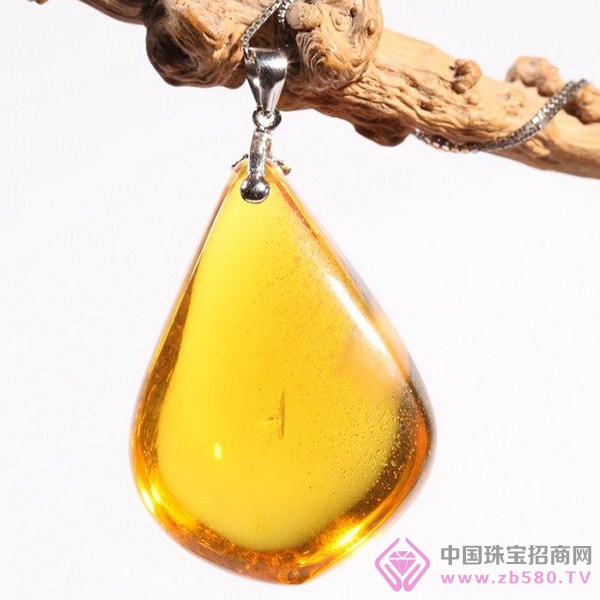Amber is a very "squeaky" substance?

The English word for amber is Amber, which means "the essence." In ancient China, amber was also called "the tiger cub." Amber is a resin of ancient plants, buried in the fossils formed by the movement of the earth's crust. It often contains bubbles, the remains of insect plants. Amber amber is a hydrocarbon containing succinic acid and amber resin. The colors are mostly yellow, orange, brown, brown or dark red, and light green and yellow, lavender varieties are extremely rare. Grease shiny, transparent to translucent.
The resin is now commercially collected, such as the hard resin produced from New Zealand's high Swiss pine. Amber in the Baltic Sea is jeweled, while hard resin is used in the decorative industry. Amber variety and evaluation. According to the different colors and characteristics of amber, China's varieties are Jinpo, Xuebo, Insect, Champer, Lingpo, Shiper, Huapo, Shuiper, Mingpo, Wax, Wax, Red Pine, etc. Jinpo is a precious quality amber.
The value of amber is not high now, unless it is antiques, superb art or contains biological remains. Amber determines its economic value based on the clarity, shape and color of the insect. The color is strong, and no impurities are preferred. The color is best in green and transparent red. The most valuable variety is wrapped in insect-containing amber, commonly known as "amber bee", with insects clear, lifelike, large and large. It is used to make beading, beads, carvings, cigarette boxes, hygienic incense, etc.
Maintenance of amber. Amber has a low melting point, is easy to melt, is afraid of heat, and is afraid of exposure. Amber products should be protected from direct sunlight and should not be placed in high temperature places. Amber is easily dehydrated and is too dry to cause cracks. Amber is organic and easily soluble in organic solvents, such as nail polish, alcohol, gasoline, kerosene, and heavy liquid. It should not be placed in a cosmetic cabinet. Under normal circumstances, do not use heavy liquid to measure its density and use the oil immersion method to measure the refractive index. . Amber is brittle and has low hardness. It should not be impacted by external force. It should avoid friction and scratching to prevent scratching and breaking. Amber imitation and its identification. The imitation of amber is bakelite, plastic and glass imitation amber. It is generally distinguished by the very low density, hardness, and softening of amber. Put amber and other imitations together in a saturated solution of salt. Only amber can float, and imitations such as bakelite, plastic, and glass-like amber sink into saturated brine. Refractive index: Bakelite 1.66, plastic 1.63, both larger than amber. Tested with hot iron needles, amber gives off a scent, while bakelite and plastic give off a spicy taste. The most similar to amber is pressed amber. Pressing amber is to concentrate the amber with a small degree of blockage, heat it between 200 °C and 250 °C, melt it, cool it and then fuse it together. There are elongated or flat bubbles, showing the flow structure, in the magnifying glass. A turbid granular structure was observed underneath.
Amber is an ancient gemstone jewelry material that has been used as a gemstone for nearly 6,000 years. In many ancient tombs in China, Greece and Egypt, ornaments made of amber have been unearthed. Ancient Roman women have the habit of holding gems in their hands. The reason is that at the temperature of the palm, amber is heated to give off a subtle elegant fragrance. The ancient Romans gave amber a very high value, and an amber-carved figurine was worth more than a strong slave. Amber can also relieve pain and stun. In some places, a bunch of amber is often hung on the chest of the child to excite the evil spirits.
Amber is often produced in coal seams and is associated with coal. Fushun amber is mainly produced in the third-generation amber-bearing coal seam of the Cenozoic. The amber produced by the European Baltic countries is the most famous, and other countries such as North America, the United States, India, New Zealand, and Myanmar have produced. China's amber production areas include Fushun, Liaoning and Nanyang, Henan. The amber produced by Fushun is yellow to golden yellow. It often contains insects, which are clear and beautiful, and are extremely valuable varieties. The quality of amber produced in Nanyang is poor, and it can only be used for medicinal purposes and to make pressed amber.
Identify the true and false of amber. The natural amber texture is very light and floats in saturated brine. However, burning or hard rubbing will give off the fragrance. Amber is a very "squeaky" substance. No two ambers are identical. Advise consumers not to give up the opportunity to enjoy amber because of the problem of true and false, and may wish to strengthen their knowledge of amber.
Ombre Curtains,Beautiful Printed Blackout Curtain,Ombre Blackout Curtain,Length Ombre Curtains 84 Inche
SHAOXING DONGAN TEXTILE CO.,LTD , https://www.yakamokhd.com